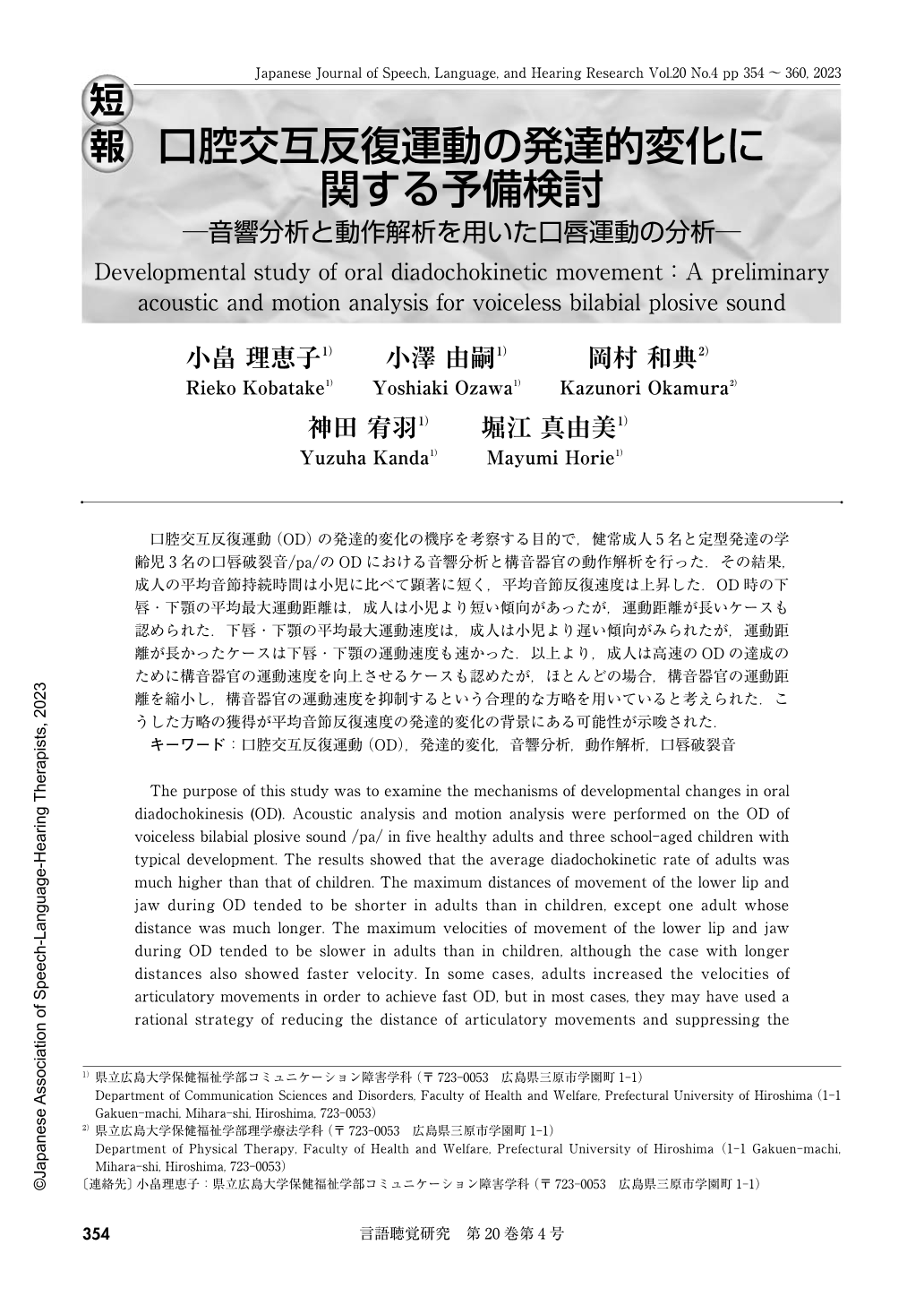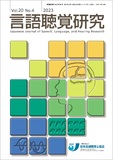Japanese
English
- 有料閲覧
- Abstract 文献概要
- 1ページ目 Look Inside
- 参考文献 Reference
口腔交互反復運動(OD)の発達的変化の機序を考察する目的で,健常成人5名と定型発達の学齢児3名の口唇破裂音/pa/のODにおける音響分析と構音器官の動作解析を行った.その結果,成人の平均音節持続時間は小児に比べて顕著に短く,平均音節反復速度は上昇した.OD時の下唇・下顎の平均最大運動距離は,成人は小児より短い傾向があったが,運動距離が長いケースも認められた.下唇・下顎の平均最大運動速度は,成人は小児より遅い傾向がみられたが,運動距離が長かったケースは下唇・下顎の運動速度も速かった.以上より,成人は高速のODの達成のために構音器官の運動速度を向上させるケースも認めたが,ほとんどの場合,構音器官の運動距離を縮小し,構音器官の運動速度を抑制するという合理的な方略を用いていると考えられた.こうした方略の獲得が平均音節反復速度の発達的変化の背景にある可能性が示唆された.
The purpose of this study was to examine the mechanisms of developmental changes in oral diadochokinesis (OD). Acoustic analysis and motion analysis were performed on the OD of voiceless bilabial plosive sound /pa/ in five healthy adults and three school-aged children with typical development. The results showed that the average diadochokinetic rate of adults was much higher than that of children. The maximum distances of movement of the lower lip and jaw during OD tended to be shorter in adults than in children, except one adult whose distance was much longer. The maximum velocities of movement of the lower lip and jaw during OD tended to be slower in adults than in children, although the case with longer distances also showed faster velocity. In some cases, adults increased the velocities of articulatory movements in order to achieve fast OD, but in most cases, they may have used a rational strategy of reducing the distance of articulatory movements and suppressing the velocities of articulatory movements. It is suggested that the acquisition of such strategies may underlie the developmental increase in OD rate.

Copyright © 2023, Japanese Association of Speech-Language-Hearing Therapists. All rights reserved.


